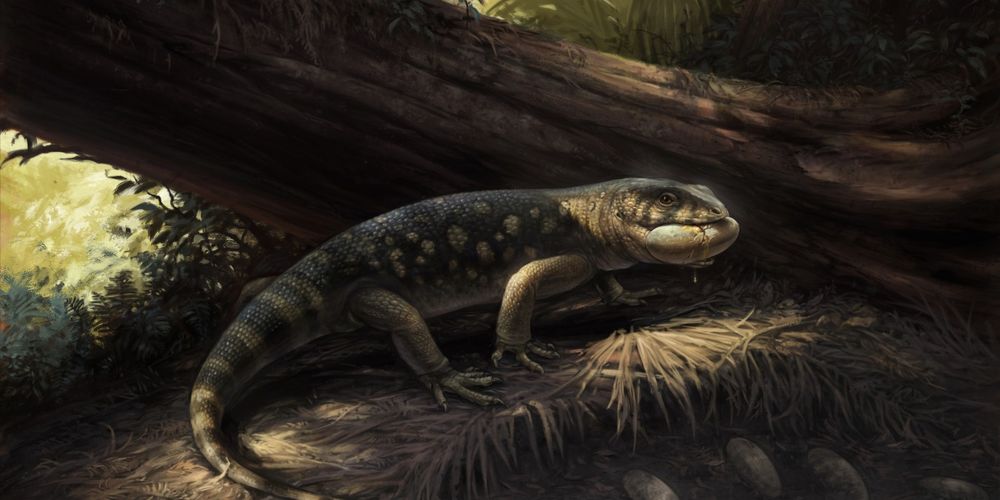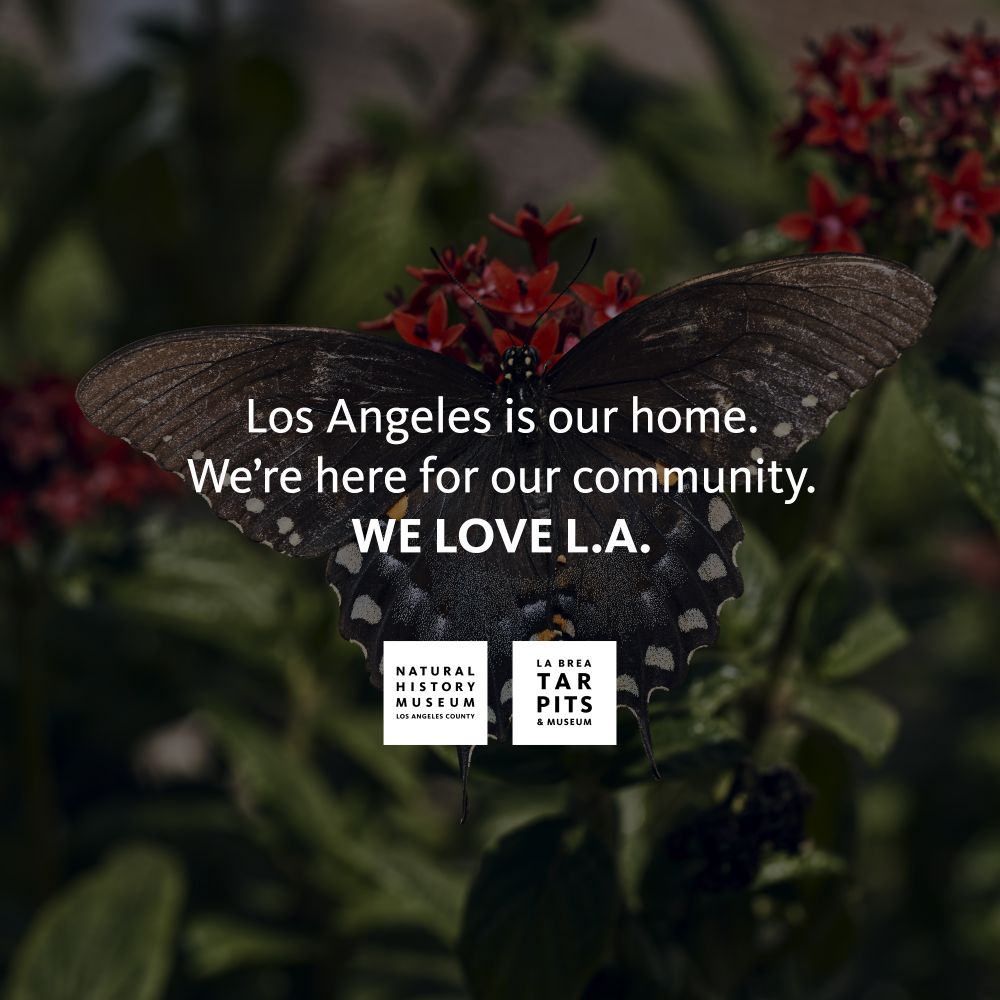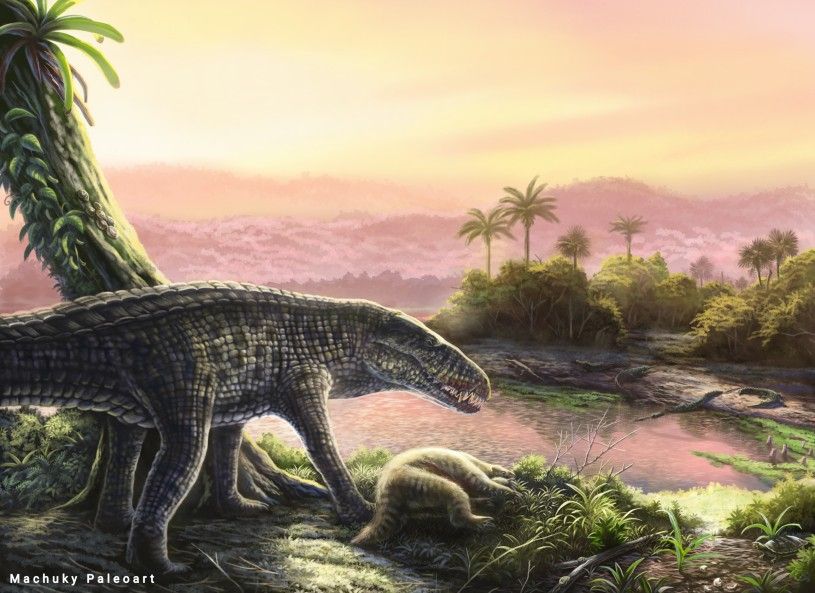
One team. Decades of history. Revisit our time with #Dodgers Team Historian Mark Langill as fandom springs to life with the #WorldSeries! Let’s go, Dodgers! go.nhm.org/dodgers
28.10.2025 16:42 — 👍 9 🔁 4 💬 0 📌 0@jvelezjuarbe.bsky.social
Associate Curator at NHMLA. Vertebrate paleontologist with an interest in marine mammals and Caribbean vertebrates. Boricua🇵🇷 The Caribbean & Eastern Pacific are my playground! Views are my own.

One team. Decades of history. Revisit our time with #Dodgers Team Historian Mark Langill as fandom springs to life with the #WorldSeries! Let’s go, Dodgers! go.nhm.org/dodgers
28.10.2025 16:42 — 👍 9 🔁 4 💬 0 📌 0
‼️Special volume about arthropod paleontology was published today in the Journal of Paleontology, honoring the late Dr. Rodney Feldmann.🦀🦞🦐 Many of the 20 articles are open access. @paleosoc.bsky.social #paleontology #fossil #crab #lobster #shrimp
Full volume:
www.cambridge.org/core/journal...
🦂 Scorpions? Not quite.
Take a closer look into #NHMLA's Entomology collection and learn more about false scorpions with resident Assistant Curator of Entomology, Rodrigo Ruedas!

From auction houses to private apartments in Asia, this film peels back the curtain on a world few ever see: fossil hunters risking everything, dealers moving specimens across borders, collectors with their prehistoric trophies, and scientists fighting to protect irreplaceable clues to Earth’s past.
17.10.2025 01:27 — 👍 11 🔁 7 💬 2 📌 0These differences may be due to variations in seafloor productivity, and/or physiological differences between #desmostylians, #sirenians and #sloths.
To learn more make sure to check out our paper and its many figures: peerj.com/articles/198...
6/6
#FossilFriday

Besides describing this amazing material we also compared ancient marine mammal herbivore communities across the Pacific Ocean. One of the things we noticed is that the South Pacific communities were chronostratigraphically younger, but also with smaller body sizes & less diverse.
5/6
#FossilFriday


After a thorough morphological assessment we concluded that the morphology of the NBC specimens is closest to #Thalassocnus natans, otherwise known from the late #Miocene of #Peru. But we did noticed some differences that may hint at greater variation, or a different species!
4/6
#FossilFriday


The specimens we describe come from the Late #Miocene Bahia Inglesa Formation in the Atacama Region. The fossils, all from the Norte Bahía Caldera (NBC) locality, include associated cranial & postcranial elements of one individual, plus additional material representing others.
3/6
#FossilFriday

While fossils of #Thalassocnus are best known from the Pisco Formation in Peru, they've been previously found in Chile too. This includes a site we previously worked on, #CerroBallena! And although mainly known from marine deposits, there is at least one continental record!
2/6
#FossilFriday

My newest publication is out in @peerj.bsky.social! In this collaboration with Ana Valenzuela, Nick Pyenson & Mario Suarez we describe the most complete skeleton of the #AquaticSloth - #Thalassocnus - from #Chile!
Artwork by @alexboersma-art.bsky.social
1/6
#FossilFriday
peerj.com/articles/198...

Hi! We need lice for our diversity and adaptation project. Specifically, we need lice from zebras, camelids (camels, llamas, alpacas, vicuñas, guanacos) & aardvarks. If you or someone you know might have lice, I'm happy to discuss our inclusive collaboration plans!
sites.google.com/nhm.org/anop...

Fossilized Bison teeth

Fossilized Bison teeth

Fossilized Camel teeth

Fossilized Horse teeth
🍖 Hungry for History? Fossils from the #TarPits reveal the diets of saber-toothed cats, dire wolves, and more—served straight from asphalt.
Take a bite into prehistory: bit.ly/TarPitsPD

Are you tired of people constantly overestimating body size of marine reptiles? No longer!
We provide equations to estimate body size in ichthyosaurians, mosasaurids, and thalattosuchians.
1/4

A.D. Gentry et al. (2025)
A new leatherback marine turtle from the lower Oligocene of North America and a phylogenetic nomenclature for Dermochelyidae
Palaeodiversity 18(1): 127-149 (2025)
doi: doi.org/10.18476/pal...
bioone.org/journals/Pal...

A new fossil of the Leatherback Turtle from Alabama just dropped! #FossilFriday
bioone.org/journals/Pal...

Reconstruction of Navaornis hestiae in its 80 million-year-old environment Copyright owned by Julia d’Oliveira. Credit: J. d’Oliveira. Email: julia_d.oliveira@hotmail.com

The giant ichthyosaur Cymbospondylus youngorum Illustration by Stephanie Abramowicz
To celebrate a momentous 10 Years of #DinoFest, we’re looking back at a decade of discoveries from the Mesozoic—the period from about 252 to 66 million years ago, when dinosaurs evolved and then came to rule the planet: go.nhm.org/dinofest10
🦖 Will you be joining us this Sunday, September 14?

Camelops hesternus fossil on display at the La Brea Tar Pits.

An illustration of the large-headed llama Hemiauchenia.

A Camelops skeleton.

An illustration of Camelops hesternus, an extinct North American camel.
🐪 Think being stuck in L.A. traffic's a drag? Try getting stuck in its 𝘵𝘢𝘳. Meet 𝘊𝘢𝘮𝘦𝘭𝘰𝘱𝘴 𝘩𝘦𝘴𝘵𝘦𝘳𝘯𝘶𝘴, the Ice Age camel that once roamed North America: bit.ly/AncientCamelLA
02.09.2025 17:11 — 👍 32 🔁 10 💬 1 📌 0
While we don’t know if there were ever such fetching coats as these, carnivores like tigers and leopards roaming forested habitats today do sport spotted, vertically striped, and horizontally striped fur as camouflage.
🐾 Are you a saber-toothed cat person, or do you prefer to chill with giant sloths? Pick Your Summer and learn all about these polar opposite Ice Age mammals during your next trip to the #TarPits: go.nhm.org/tpsummer
18.07.2025 21:13 — 👍 27 🔁 1 💬 0 📌 1
🦴 𝘼𝙧𝙚 #direwolves back? Dr. Emily Lindsey, Associate Curator and Excavation Site Director at the #TarPits, shares some insight about the Ice Age Angeleno that's making headlines.
youtu.be/v9d1Yu3OZBw
🦣 Meet the #TarPits' resident mammoth, Zed!
Catch a glimpse of the most complete Columbian mammoth discovered in the heart of LA, only at La Brea Tar Pits!

Artistic reconstruction of Bolg amondol, depicted raiding an oviraptorosaur dinosaur nest amidst the lush Kaiparowits Formation habitat. Art by Cullen Townsend.
From the Press Room | New Species of Armored, Monstersaur Lizard that Lived Alongside Dinosaurs Identified by #NHMLA Paleontologists!
Discovery of 𝘉𝘰𝘭𝘨 𝘢𝘮𝘰𝘯𝘥𝘰𝘭 reveals the complex evolutionary history of giant Gila Monster relatives: go.nhm.org/bolg-pr
📷 Cullen Townsend

Dulled image of a butterfly with text "Los Angeles is our home. We're here for our community. WE LOVE L.A." with the Natural History Museum and La Brea Tar Pits logos.
Museums can be places of respite, peace, and recreation, and we strive to make the Natural History Museum and La Brea Tar Pits welcoming for all. We’re with you, L.A.
11.06.2025 22:10 — 👍 56 🔁 13 💬 2 📌 0
🎉New lab paper lead by @just-fre.bsky.social based on his master thesis work! Francesco and his colleagues describe new allodaposuchid material from the latest Cretaceous of Spain (as well as the importance of postcranial anatomy for croc phylogenies 😉).
www.sciencedirect.com/science/arti...
Coelacanths having a great week! First a new live sighting of the Indonesian species, and now this fantastic work on their musculature by Aléssio Datovo and the late Dave Johnson
03.05.2025 14:36 — 👍 15 🔁 4 💬 0 📌 0
A sebecid and its prey, a megalocnid ground sloth, overlook a coastal pond in the Dominican Republic around 5.8 million years ago. Artwork by Machuky Paleoart.
NEWLY PUBLISHED » Dr. Jorge Velez-Juarbe (Associate Curator, Marine Mammals) discovers that sebicids, ancient land-dwelling crocodile-like beasts, reigned over the West Indies as apex predators after vanishing from South America: bit.ly/AncientCrocs
29.04.2025 23:38 — 👍 59 🔁 22 💬 0 📌 1
an illustration shows a creature like a large lizard or crocodile with a fuzzy mammal animal at its feet on a grassy lip of land overlooking a small lagoon or pond with layers of rolling hills covered in tropical trees disappearing into a pale pink sunset mist
A fossil tooth and two vertebrae unearthed in the Dominican Republic have paleontologists rethinking sebecids, giant croclike terrestrial predators, and their story in the Caribbean.
Story:
www.floridamuseum.ufl.edu/science/gian...
Study: doi.org/10.1098/rspb...
And that's a wrap! Our paper is #OpenAccess and the specimens were CT-scanned with data available through www.morphosource.org
Big shoutout to @machukypaleoart.bsky.social for the awesome artwork!
Stay tuned for more Caribbean extinct vertebrates in the future!
#CaribbeanPaleobiology
11/11

Maps of South America and the Caribbean region during the (a) Palaeogene, (b) Neogene and (c) late Quaternary show the generalized distribution of Sebecidae in circles. The silhouettes correspond to the terrestrial apex predator groups present in the region during each period, with native South American predators (Sebecidae, Madtsoiidae, Phorusrhacidae, Sparassodonta) in blue, late Cenozoic invasive predators (Canidae, Felidae, Ursidae) in red and endemic secondary terrestrial predators in the West Indies (Strigiformes, Accipitridae, Crocodylus) in green.
Insular sebecids went extinct several million years after their South American counterparts, marking the end of Notosuchia — a long-lived clade of terrestrial crocodyliforms. Their extinction likely reshaped predator-prey dynamics in the Antillean islands and on the South American continent.
10/11
The presence of sebecids alongside side-necked turtles, gharials, caviomorph rodents, megalocnid sloths and platyrrhine primates strongly suggests that between 29-4.6 million years ago Antillean terrestrial ecosystems closely resembled those in #SouthAmerica.
9/11


Sebecid teeth from the early Oligocene of Puerto Rico (a), Early Miocene of Cuba (b,c), Late Miocene-Early Pliocene of Hispaniola (d), and, for comparison, a tooth of Boverisuchus vorax from the Eocene of North America (e).

Cervical (a) and caudal (b) vertebrae of Sebecus sp. from the Late Miocene-Early Pliocene of Hispaniola. Scale = 15 mm.
The fossils we describe come from the early Oligocene of #PuertoRico, the Early Miocene of #Cuba & Late Miocene to Early Pliocene of #Hispaniola. While most specimens consisted of their distinctive flat, serrated teeth, it was the vertebrae that ultimately confirmed the identification.
8/11